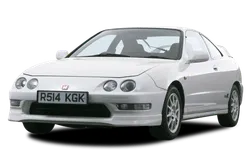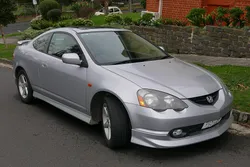

Honda Integra Generation 5 Overview
Explore the Honda Integra, focusing on its Generation 5 model. Discover features, specifications, and insights about this iconic car in Portugal.
The Honda Integra has long been celebrated in the automotive community for its sporty demeanor and reliability. Among its various generations, the fifth, produced from 1993 to 2001, stands out as a favorite among enth...
Technical Specifications
Select Version
Dimensions
Engine
Driving
Others
History and Features
Mycarro AI
Apr 26, 2025
The Honda Integra has long been celebrated in the automotive community for its sporty demeanor and reliability. Among its various generations, the fifth, produced from 1993 to 2001, stands out as a favorite among enthusiasts. This iteration of the Integra not only solidified Honda's reputation for building compact performance cars but also created a lasting legacy that continues to resonate with fans today.
Introduction to Generation 5
The fifth generation of the Honda Integra, often referred to as the DC2, debuted in 1993. It featured a bold and aggressive design that set it apart from its predecessors. The exterior was characterized by a sleek, aerodynamic profile with sharply styled headlights and a distinctive rear end. This generation was available in both coupe and sedan configurations, appealing to a wide range of consumers looking for either a sporty driving experience or a practical daily driver.
Performance and Engine Options
One of the standout features of the DC2 Integra was its engine lineup. The model primarily offered the B18C1 engine, a 1.8-liter inline-four powerhouse that produced a thrilling 140 horsepower in its base trim and up to 190 horsepower in the high-performance Type R variant. This potent engine was mated to a tight 5-speed manual transmission that allowed for rapid gear changes and an engaging driving experience. The car's lightweight construction further enhanced performance, enabling agile handling and responsive steering.
The Integra Type R, introduced in 1995, was especially notable for its focused performance elements. Equipped with a higher compression ratio, revised intake and exhaust systems, and a limited-slip differential, the Type R was engineered for the track. This variant showcased Honda's racing heritage, making it a sought-after model for both racers and collectors.
Interior Features and Comfort
Inside the Integra, the focus on driver engagement continued. The cockpit featured a driver-oriented layout with supportive bucket seats that cradled occupants during spirited driving. The dashboard incorporated essential gauges, including a tachometer prominently featured in the center. Despite being a compact car, the Integra offered a surprisingly spacious interior, providing comfort for both driver and passengers. Higher trims offered amenities such as air conditioning, power windows, and an upgraded sound system, enhancing the daily driving experience.
Handling and Suspension
One of the hallmarks of the Honda Integra Generation 5 was its exceptional handling capabilities. Equipped with an independent front and rear suspension setup, the DC2 offered a smooth ride along with sharp cornering dynamics. Steering feedback was direct and responsive, drawing drivers into the experience of the road. Additionally, the car's low center of gravity and lightweight body helped it maintain stability at higher speeds, making it an ideal choice for those who enjoyed carving through winding roads or tackling race tracks.
Aftermarket Potential
As with many Hondas of its era, the Integra DC2 enjoys a vibrant aftermarket community. Enthusiasts flocked to modify and enhance their vehicles, with everything from performance upgrades to cosmetic enhancements. This generation's performance potential, coupled with its reliability, has made it an iconic platform in the tuning scene. It continues to be a favorite vehicle for modifications, with many enthusiasts recognizing its potential for achieving impressive horsepower figures and personalized aesthetics.
Legacy and Conclusion
The Honda Integra Generation 5 holds a special place in automotive history. Its combination of reliable performance, attractive design, and driver-focused features made it a beloved model among enthusiasts and casual drivers alike. The Type R variant, in particular, has earned legendary status, with its lightweight chassis and high-revving engine becoming hallmarks of Honda's racing pedigree.
As time passes, the Integra DC2 continues to cultivate a devoted following. Its blend of reliability and sportiness ensures that it remains a viable option for those seeking an engaging driving experience. Today, the fifth generation Honda Integra stands as a testament to Honda's engineering prowess and an enduring symbol of and true driver's car in the automotive world.
